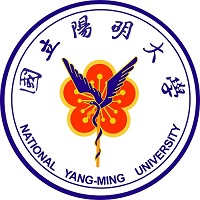Team:NYMU-Taipei
From 2012.igem.org
| Line 6: | Line 6: | ||
This is a very promising project with huge commercialized potential since the mass production of bioreactors full of our organisms is foreseeable. What’s more interesting, with the help of division inhibitor, gene for invasion, we can install our designation into human cells as artificial organelles and grant human being the ability to survive in extreme environments such as Venus without wearing bulky space suits. | This is a very promising project with huge commercialized potential since the mass production of bioreactors full of our organisms is foreseeable. What’s more interesting, with the help of division inhibitor, gene for invasion, we can install our designation into human cells as artificial organelles and grant human being the ability to survive in extreme environments such as Venus without wearing bulky space suits. | ||
| + | Sulfide metabolism | ||
| + | We all know that sulfide dioxides are one of the pollutants in urban area, in addition, sulfide compound also exist on Venus. Therefore, we will first think about how to reduce the sulfide dioxides in the atmosphere on earth; then we can move our project further on Venus. | ||
| + | |||
| + | We plan to develop a system which can reduce the SO2 into H2S using the gene in several bacteria such as sulfate reducing bacteria such as Desulfovibrio desulfuricans. After we acquire H2S, we may use several bacteria (such as Oscillatoria limnetica, Rhodobacter capsulatus, Cyanobacteria PCC7002 ) which contain Sulfide-quinone reductase(SQR).By using SQR, we can use H2S as reducing energy and can get some carbohydrate such as glucose, and can provide as the energy for creature to survive. | ||
Revision as of 08:11, 15 July 2012
| Nitrogen metabolism
With an eye to combat the environmental issues related to nitrogen oxides, we designed some circuits that can produce several kinds of nitrogen oxides reductases and transcriptional regulator into our organisms so that those harmful nitrogen oxides can eventually reduce to nitrogen. Combined with sulfur metabolism pathway and Calvin cycle inherent in cyanobacteria, we provide an eco-friendly, multi-function solution to the air pollution problem. This is a very promising project with huge commercialized potential since the mass production of bioreactors full of our organisms is foreseeable. What’s more interesting, with the help of division inhibitor, gene for invasion, we can install our designation into human cells as artificial organelles and grant human being the ability to survive in extreme environments such as Venus without wearing bulky space suits. Sulfide metabolism We all know that sulfide dioxides are one of the pollutants in urban area, in addition, sulfide compound also exist on Venus. Therefore, we will first think about how to reduce the sulfide dioxides in the atmosphere on earth; then we can move our project further on Venus. We plan to develop a system which can reduce the SO2 into H2S using the gene in several bacteria such as sulfate reducing bacteria such as Desulfovibrio desulfuricans. After we acquire H2S, we may use several bacteria (such as Oscillatoria limnetica, Rhodobacter capsulatus, Cyanobacteria PCC7002 ) which contain Sulfide-quinone reductase(SQR).By using SQR, we can use H2S as reducing energy and can get some carbohydrate such as glucose, and can provide as the energy for creature to survive.
Symbiosis Every year, iGEMers create plenty of parts, they code for peptides, proteins or composite parts for multiple functions. However, they are just DNA sequence. But what if we create parts as the scale of organelles? With the technique, we can implant any cells into the host depends on what kinds of functions we hope to see in it. Compare with transforming cells using merely simple DNA sequence, implanting new organelles can bring more complicated function and more precise controlling system. Maybe someday we can make eukaryote to fix nitrogen, reduced sulfite, or even make animal to photosynthesize! Or we can create an organism that can lives in other planets! Quite promising, isn’t it? |
 "
"
